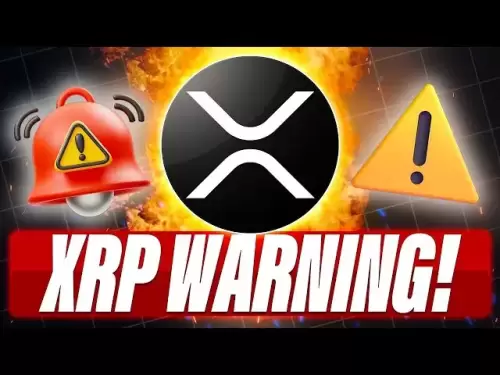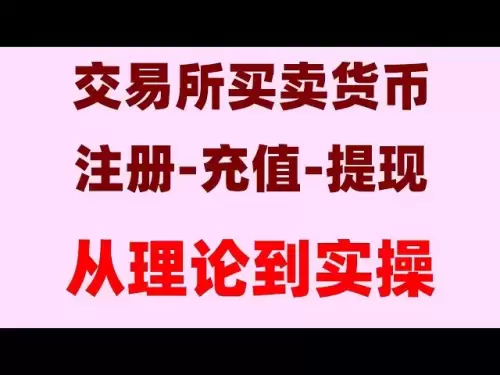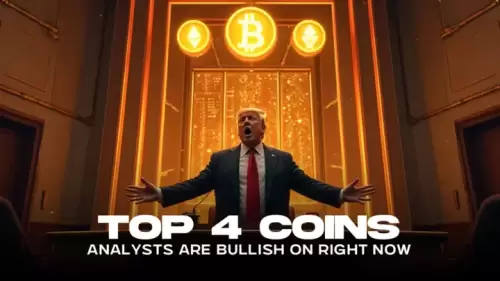 |
|
 |
|
 |
|
 |
|
 |
|
 |
|
 |
|
 |
|
 |
|
 |
|
 |
|
 |
|
 |
|
 |
|
 |
|
Cryptocurrency News Articles
Should Bitcoin Be for Money Only? Developers Say Yes
May 19, 2025 at 06:01 am
A clash is brewing in the Bitcoin world over how the blockchain is being used — and some argue, misused.

A clash is brewing in the Bitcoin (BTC) world over how the blockchain is being used - and some argue, misused.
In a recent discussion on X, Saifedean Ammous, author of The Bitcoin Standard, said he’s willing to fund efforts to make spamming the network more costly. His comment follows concerns from other members of the community that non-financial data is clogging up block space and deviating from Bitcoin’s original monetary purpose.
The technical friction centers around a proposed code change that would let node operators block certain data types more easily. The developer pushing for the update, known on X as GrassFedBitcoin, argues that the lack of filtering options contributes to unnecessary network bloat.
“We have no way to stop it except by making new software that adds new functionality to filter out the spam,” he explained. “People who want the nodes to be able to filter out certain data types will upgrade their nodes. People who prefer to keep full nodes will be able to do so.”
Those against the idea say it’s an endless game of cat-and-mouse. Spam can easily be disguised using clever coding tricks, meaning any filtering tools would need constant updates.
“It’s not like you can add a spam token and then all spam transactions will be in that token,” adds Adam Back, CEO of Blockstream. “People will just put the spam payload in the output script or in the witness program.”
However, Ammous sees it more like email spam - messy but manageable. He says refusing to relay junk data isn’t censorship but rather a valid choice for node operators, who already reject invalid transactions or those with insufficient fees.
“We can start by making it harder to spam and more interesting to cooperate in keeping the network spam free,” said Ammous. “Maybe we should hire some developers to make tools to disrupt the spammers’ tools.”
The technical crux of the issue lies in how easily nodes can be programmed to identify and segregate specific data. At present, it's a relatively tedious process, rendering it largely unfeasible for large-scale spam filtering.
This discussion comes amid a broader consideration of what belongs on Bitcoin’s base layer as block sizes continue to grow. They are already averaging 1.5MB and are expected to balloon to 4MB due to these inscriptions.
Disclaimer:info@kdj.com
The information provided is not trading advice. kdj.com does not assume any responsibility for any investments made based on the information provided in this article. Cryptocurrencies are highly volatile and it is highly recommended that you invest with caution after thorough research!
If you believe that the content used on this website infringes your copyright, please contact us immediately (info@kdj.com) and we will delete it promptly.
-

-

-

-

- Unexpected Run to $5 Possible for Ripple (XRP) in the Coming Weeks, While New Altcoin Rexas Finance (RXS) Quietly Brews a 12500% Breakout Run
- May 19, 2025 at 02:05 pm
- After going through legal tangles and a pause in growth, XRP is bouncing back ever so slightly, enough to fuel daring forecasts of a potential surge to $5 within weeks.
-

-

- XRP Breaks New Ground: What CME Futures Really Mean for Crypto's Underdog—and What Traders Must Know Now
- May 19, 2025 at 01:55 pm
- The Chicago Mercantile Exchange—a financial institution that conjures images of bustling pits and billion-dollar bets—is opening its doors to the world's most embattled cryptocurrency: XRP.
-

- As capital rotation begins to resurface across the digital asset landscape, many in the crypto community are revisiting altcoins with renewed interest.
- May 19, 2025 at 01:55 pm
- But this time, the focus has noticeably shifted. Rather than chasing hype-driven narratives or short-term volatility plays, decision-makers are narrowing in on projects with real infrastructure value
-

-




























































